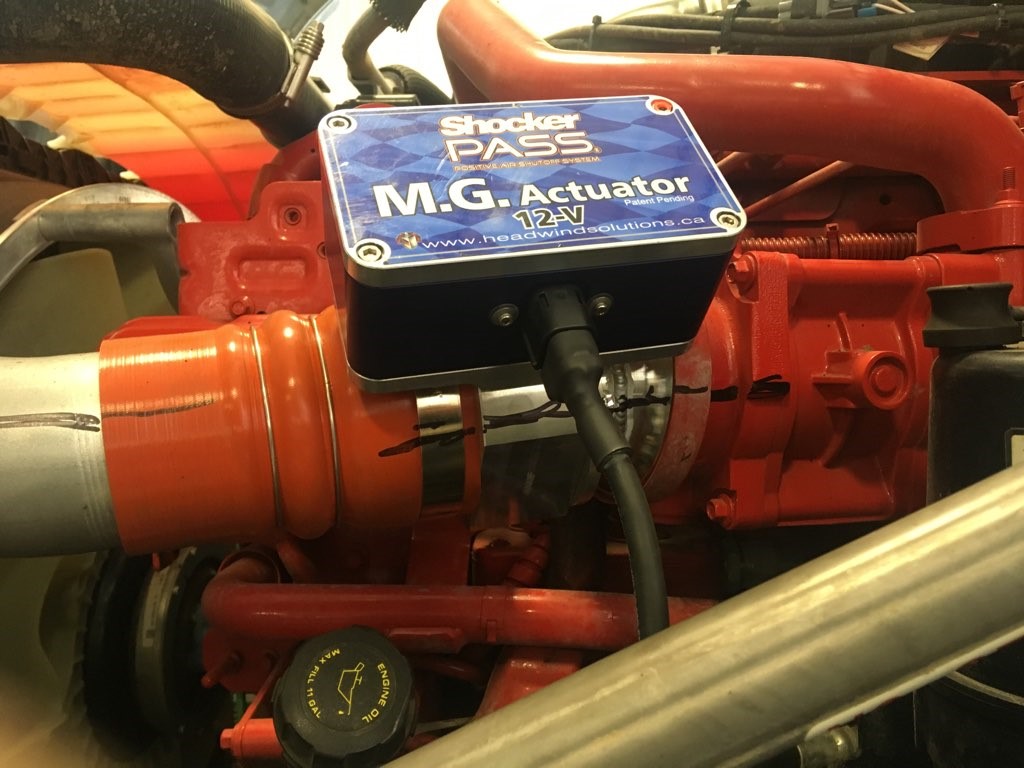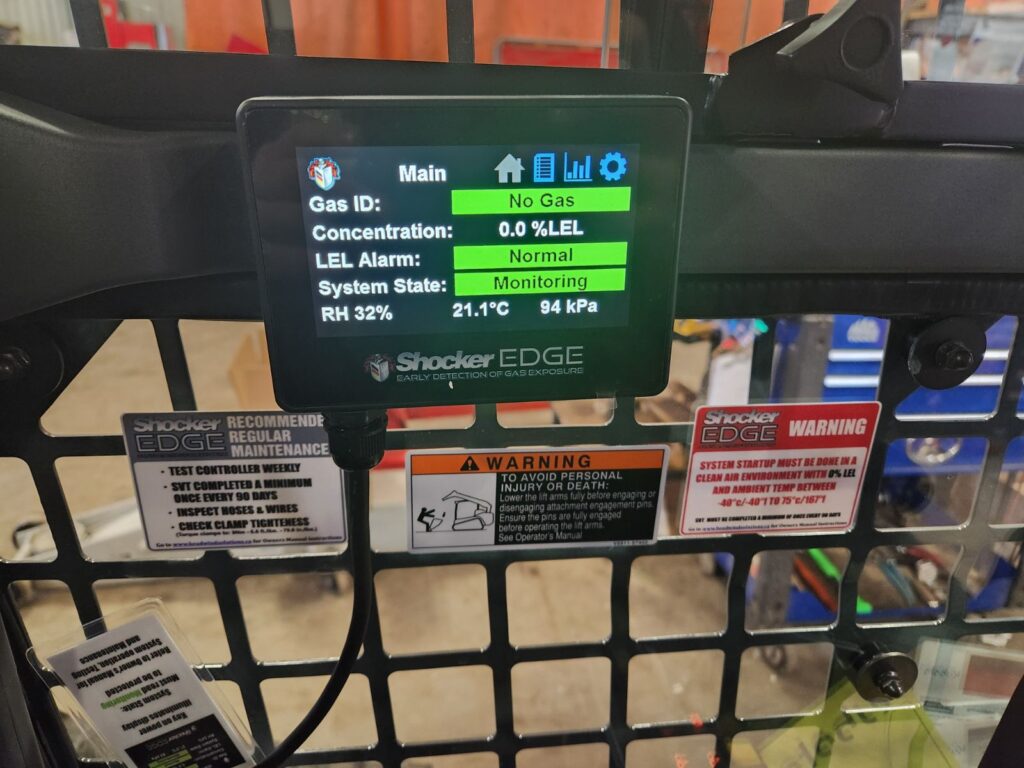Industrial settings can be incredibly dangerous. With large equipment working in areas where dangerous hydrocarbons are often present, it is important to always ensure the safety and efficiency of diesel engines. One critical component in improving the safety of job sites is the emergency air intake shut off valve. This device plays a vital role in preventing engine runaway, which can lead to catastrophic failures and accidents. In this blog, we’ll cover what these valves are, how they work, their benefits, potential risks, different types, and why you might consider advanced options like the ShockerEDGE for even greater safety.

Emergency Air Intake Shut Off Valves
What They Are
An emergency air intake shut off valve is a device designed to protect diesel engines from over speeding runaway conditions. Diesel Engine Runaway occurs when an engine uncontrollably accelerates by taking in fuel from the air, potentially leading to mechanical failure or explosions. These valves are engineered to shut off the engine’s access to air, stopping the engine from taking in external hydrocarbons and as such removing the fuel source.
How They Work
An emergency air intake shut off valve operates in two main configurations: manual and automatic emergency shut offs.
- Manual Configuration: In a manual setup, an operator must actively engage the valve by flipping a switch. This action closes the air intake, stopping the engine from drawing in air and consequently shutting it down.
- Automatic Configuration: Automatic valves are electronically controlled and are set to engage when the engine’s RPM exceeds a predefined threshold. This threshold is typically set just above the diesel engine’s redline. When this limit is breached, the valve automatically closes the air intake, preventing the engine from ingesting gas or hydrocarbons from the ambient air.
Both configurations aim to immediately cease engine operation during emergency conditions, safeguarding both personnel and equipment.
What are the Benefits of an Emergency Air Intake Shut Off Valve?
Added Safety for Your Team
One of the most significant advantages of emergency air intake shut off valves is the enhanced safety they provide for your team. By promptly shutting down the engine in the event of runaway or over-speeding, these valves prevent accidents that could result in injury or worse.
Protect Your Equipment
These valves also play a crucial role in protecting your equipment. Runaway engines can suffer severe damage where the metal becomes red hot and warps or seizes, leading to costly repairs and downtime. By stopping the engine before it reaches critical speeds, emergency air intake valves help maintain the integrity and longevity of your machinery.
Regulatory Compliance
Many industries are subject to stringent safety regulations. Installing emergency air intake shut off valves can help you comply with these regulations, avoiding fines and potential legal issues.
Keeps Your Site More Secure
With these valves in place, the overall security of your site is enhanced. By preventing engine-related accidents, you create a safer environment for all operations.
Allows Unmanned Equipment Operation
An automatic shut-off valve provides the added benefit of allowing equipment to operate unattended. In the event of an emergency, these valves will automatically shut down the engine, ensuring safety even in the absence of personnel.

Are There Any Risks Associated with Emergency Air Intake Valves?
While emergency air intake valves offer substantial safety benefits, there are a couple of risks to consider:
- They only work with Diesel Engines: These valves are only suitable for Diesel Engines. This is because the air intake valve is only applicable to diesel combustion, so gas engines do not require mechanical shut offs.
- The shut off is reactive in nature: Emergency air intake valves are reactive devices. They only engage once a problematic situation has already arisen. This means there must be an existing issue for the valve to address, rather than preventing the issue from occurring in the first place.
What are the Kinds of Emergency Air Intake Shut Offs?
ShockerPASS
The ShockerPASS is a high quality emergency air intake valve shut off system available from Headwind Solutions. The PASS is available in both automatic and manual configurations:
- Manual ShockerPASS: This version requires an operator to manually flip a switch to shut off air access, thereby stopping the engine.
- Automatic ShockerPASS: This valve is connected to the engine and automatically shuts off the air intake if it detects the engine RPM overspeeding. This proactive measure ensures immediate response to potential runaway conditions.
ShockerEDGE
The ShockerEDGE represents a more advanced safety solution, offering preemptive protection beyond that of traditional air intake valves. It is designed to shut off any combustible engine before a problem arises:
- Advanced Detection: The ShockerEDGE system detects gas in the ambient air. If hydrocarbons are detected above a safe lower explosive limit (LEL), the system automatically shuts off the engine power.
- Wide Applicability: Unlike traditional air intake valves, the ShockerEDGE can be used with any combustion engine, not just diesel.
- Proactive Protection: This system doesn’t wait for an over-speed condition. It acts at the first sign of danger, providing a higher level of safety and security.
Why Choose a ShockerEDGE Instead of an Emergency Air Intake Shut Off?

Proactive Safety
The ShockerEDGE offers proactive safety measures by alerting your team to potential issues before they escalate. Drivers and operators are notified of dangerous conditions before they even leave the cab, allowing them to take action before stepping outside the vehicle or continuing with operations.
Continuous Monitoring
One of the key advantages of the ShockerEDGE is how it performs continuous gas monitoring. The system recalibrates automatically, eliminating the need for docking stations, calibration, bump gas, or instrument technicians. Your engine essentially becomes a continuous gas monitor, enhancing overall site safety.
Enhanced Facility Safety
Early detection of gas leaks or other hazardous conditions allows for swift intervention. By alerting you to potential risks sooner, the ShockerEDGE helps prevent incidents that could lead to explosions or other serious consequences. This not only protects personnel but also helps safeguard your facility and assets.
Get the ShockerEDGE for Proactive Safety
For those seeking the highest level of safety, the ShockerEDGE is an excellent choice. Talk to Headwind Solutions about installing a ShockerEDGE system today. This advanced safety solution provides enhanced gas detection, continuous monitoring, and proactive protection, ensuring the safety of your team, equipment, and facility. Don’t wait for an emergency to act—invest in the ShockerEDGE for peace of mind and superior safety.

